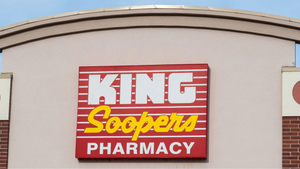Taking the Order is Easy—In-Store Fulfillment is HardTaking the Order is Easy—In-Store Fulfillment is Hard
It has taken more than two decades since the dot-com revolution of the 1990s, but for today’s supermarket operators, digital grocery ordering and in-store fulfillment have finally emerged as non-optional elements of the business.
August 12, 2019

Sponsored by Rakuten Ready
It has taken more than two decades since the dot-com revolution of the 1990s, but for today’s supermarket operators, digital grocery ordering and in-store fulfillment have finally emerged as non-optional elements of the business.
Retailers with great traditions of outstanding stores and sophisticated merchandising now find themselves racing to establish efficient and cost-effective methods for picking and staging online orders inside those stores. They are working to refine processes that support both home delivery and customer pick up, or “click and collect.”
Shopper expectations have been established by their experiences in other categories of online shopping, where a typical order includes just a handful of items that can be easily packed in a carton and shipped via a third party such as UPS or the US Postal Service. Their demands include seamless and accurate digital ordering from mobile devices, rapid fulfillment and free (or nearly free) delivery.
Best practices from those digital retailers, however, such as massive centralized fulfillment centers outfitted with robots and conveyors, do not translate well into the grocery sector. This is due to five fundamental differences that come with the supermarket territory:
Quantity. Digital grocery orders tend to have large numbers of items—often a dozen or more—that must be in-stock and picked from shelves, coolers, freezers and steam tables across a large selling area that is organized around shopper convenience, not picker efficiency.
Bulk. Digital grocery orders are bulky, heavy and often fragile, making them poor candidates for third-party shipping.
Temperature. Digital grocery orders include products with varying temperature control requirements, such as ice cream, veggies or milk.
Staging. Digital grocery orders must be assembled and placed in a holding area for pick up within the store environment in a setting that allows them to be handed over to shoppers promptly.
Timing. Digital grocery orders need to be absolutely ready on time, but not so early that perishable items can thaw, wilt or spoil while they await pickup. Picking too early also means a larger holding area is needed.
For supermarkets, tackling these challenges means identifying new tools and best practices that are specific to the grocery business, not rooted in methods preferred by other digital retail channels.
How are successful supermarkets making it work? Several best practice areas are emerging, which are enabled by technology and tools developed specifically for our industry:
Quantity. Save steps and labor hours by picking several digital orders simultaneously, using specially designed trolleys and guided by a smart mobile application.
Bulk. Encourage shoppers to try click and collect ordering for timing flexibility and convenience, free of delivery costs.
Temperature. Minimize holding times by assembling orders on a just-in-time basis, according to pick up time windows selected by shoppers during the ordering process.
Staging. Set aside an order-staging area located adjacent to the pick-up entrance with appropriate temperature zones. Allocate enough staffing during peak hours, such as after school and after work.
Timing. Implement predictive arrival technology within order-picking and pick-up applications that efficiently guide associates to complete tasks just in time and delight shoppers the moment they arrive at the pickup zone.
These solutions work best when they leverage a combination of sophisticated order ahead mobile technology with thoughtful and practical organization of fulfillment workflows. The result can be a seamless digital shopping experience that reinforces shopper satisfaction and loyalty.
In the mobile-active world of retail, the race is on to compete and meet fast-changing shopper expectations. Supermarket operators don’t have to tackle the challenges alone. Rakuten Ready has proven business-ready order ahead technology solutions for order management, fulfillment and customer pickup that work seamlessly with existing store processes. Visit RakutenReady.com to learn more.
You May Also Like




